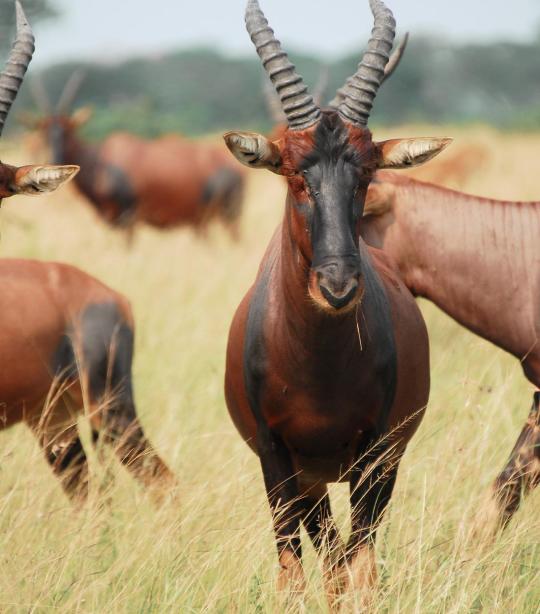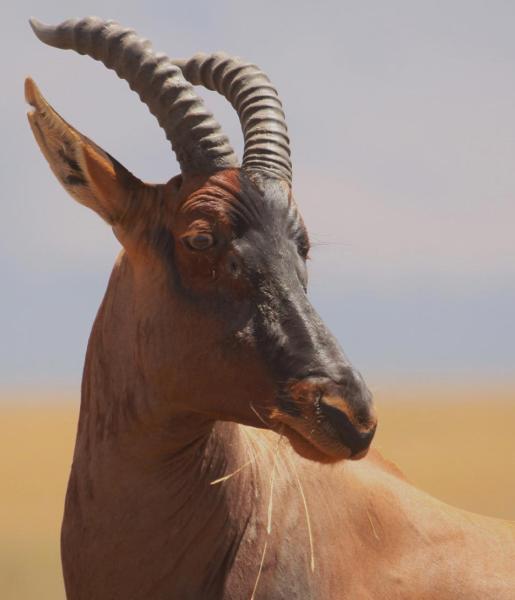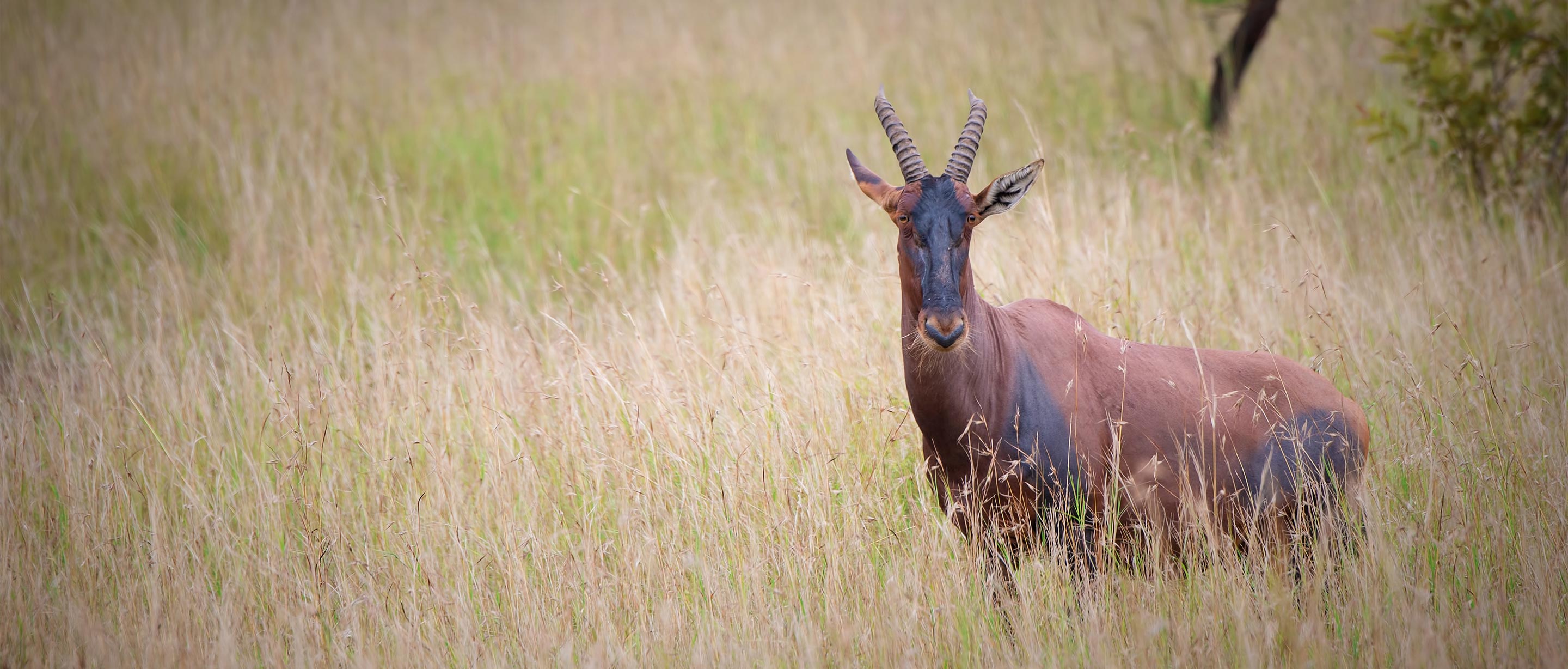What is a topi?
They are medium-sized antelopes with a striking reddish-brown to purplish-red coat. Distinct black patches appear on their face, their upper forelegs, and on their hips and thighs. To complete their singular appearance, the topi's yellowish-tan legs look like they are encased in stockings.
Although not quite as large as their relative the hartebeest (kongoni), topis have a similar body shape. However, it does not have such a long, narrow head, nor are they as high at the shoulder. Female topis are usually lighter in color than the males. Both sexes have thick, heavily ringed, lyre-shaped horns that are about 30 to 40 centimeters long (11 to 16 inches). Topis have good sight and hearing and can run quite fast with a bounding gait.
Damaliscus lunatus
90 to 147 kilograms (198 to 324 pounds)
104 centimeters to 126 centimeters in height (40 to 50 inches)
15 years in the wild
Floodplains and grasslands
Herbivorous
8 months
Lions, leopards, cheetahs, hyenas, hunting dogs, humans

Challenges
Habitat loss is a major strain on topi populations.
Human populations are growing and expanding agriculture, roads, and settlements, leading to the loss of living space for these large antelopes and resulting in many complications. The topi’s ecological and dietary limitations make it more difficult for them to compete for resources. Hardier antelopes, like the wildebeest, fare better in less favorable conditions. Livestock is also out-competing topis on grazing ranges during the dry season.
Solutions
Our solutions to protecting the topi:
African Wildlife Foundation works with government entities to help plan and propose alternative solutions to habitat fragmentation. AWF provides its scientists and researchers as resources to assist in proper planning to ensure a balance between modernization and conservation.
AWF brings communities together with private investors to construct tourism lodges like Satao Elerai, a luxury lodge situated on 5,000 acres in Kenya. The land is protected, so wildlife can roam safely and freely, and the revenue is reinvested into the community and into local wildlife conservation.


Behaviors
They are extroverted and even mingle outside of their species.
Topis are exceptionally gregarious and live in herds of 15 to 20. In some places, it is possible to see herds of hundreds. They have a flexible social structure. Sedentary populations display the usual residence pattern — small herds led by a dominant male. During migratory periods, large numbers of animals congregate together indiscriminately. When the group stops, even if for just a few hours, males establish small, temporary territories in which they shepherd the females.
They also spend much of their time with other antelopes, such as wildebeest, and also with zebras and ostriches
Females can delay giving birth if there is imminent danger.
Calving normally occurs once a year and is timed for periods when grass supplies are plentiful. Nonetheless, topis are almost as flexible in their reproduction as they are in social organizations. If food supplies are particularly good, then they will conceive at different times of the year, with shorter intervals between calves. Females have also developed the ability to stall the labor process if they sense immediate danger.
Diet
The topi is a picky eater.
They only eat grass — their narrow muzzle being well-adapted for selecting the most tender growth. They graze for a while and then rest and chew their cud before continuing feeding. These antelopes can go without water for long periods of time only if they have access to green pastures. If green grazing is not available, the topi must drink daily.
Habitats
Where do topis live?
Their favorite habitats are floodplains, but they are sometimes found in dry areas of open savanna and park woodland, taking to the shade during the heat of the day. The largest number of topis are found in Southern Sudan and Tanzania's Serengeti National Park.



